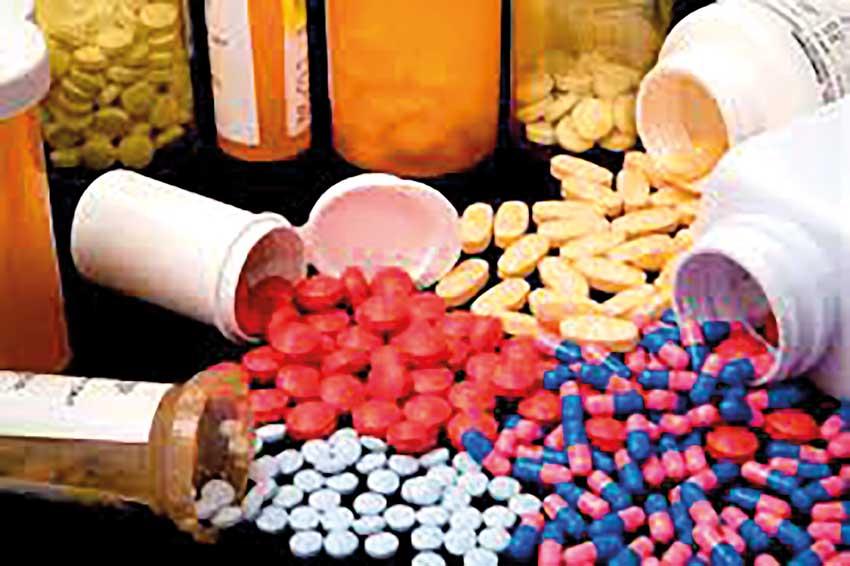Reply To:
Name - Reply Comment

 Pharmaceuticals have been manufactured by the private sector in Sri Lanka for well over half a century, with pioneers such as Dumex (now Astron Limited), GSK, Gamma and J.L. Morison Son & Jones, now known as Morison Ltd. Since then, the industry has taken a winding path, facing challenges and chalking up victories.
Pharmaceuticals have been manufactured by the private sector in Sri Lanka for well over half a century, with pioneers such as Dumex (now Astron Limited), GSK, Gamma and J.L. Morison Son & Jones, now known as Morison Ltd. Since then, the industry has taken a winding path, facing challenges and chalking up victories.
Today, from a global perspective, Sri Lanka’s pharmaceuticals industry is at a primary stage. Out of our domestic annual market of Rs.130 billion, 40 percent comes from government purchasing. Tellingly, locally manufactured pharmaceuticals only account for 15 percent of the total market share. Even more importantly, local manufacturers only supply 5 percent of the pharmaceuticals sold in the private market, with imports making up 95 percent.
As recently as a decade ago, local manufacturers only supplied 4-5 percent of the total market share of pharmaceuticals. However, a key piece of legislation enacted in 2014 saw the implementation of a Guaranteed Buy Back Agreement (GBBA) for locally produced pharmaceuticals by the Health Ministry, giving preference and guaranteed quantities to local manufacturers for a period of five years.
With this guarantee, the local manufacturers went into high gear, upgrading facilities and expanding capacity. Today, nearly 25 percent of all medicines in the state health sector are supplied locally, saving millions of dollars in foreign exchange. The programme was so successful that it has been extended up to 2024 by the Health Ministry.
With the membership in the Sri Lanka Pharmaceutical Manufacturers’ Association (SLPMA) numbering over 20, the industry is well placed to up the ante. The local manufacturers worked around the clock to keep hospitals supplied when the pandemic outbreak in 2020 effectively shut down the global supply chain networks.
Encouraging also is the government’s focus on the local pharmaceuticals industry, with the creation of a State Ministry for Pharmaceuticals Manufacture and plans to establish pharmaceutical manufacturing zones to attract investors.
What then needs to happen here on forward, to make sure Sri Lanka establishes itself as a serious player in the pharmaceutical manufacturing industry?
Quality-compliant facilities
Quality is the bedrock of pharmaceuticals. When it comes to their lives, people naturally only want the best. It is crucial therefore that the industry invests in quality compliance as per international standards, targeting global accreditations such as EU GMP, USFDA, UKMHRA and PIC/S. Quality does come at a cost.
However, revamping the local pharma manufacturing industry by assuring quality would help to win the trust of key stakeholders such as medical professionals, chemists and the public, effectively driving higher consumption of local pharmaceuticals.
Latest technology and R&D capabilities
Pharmaceutical innovation demands massive investments. However, it is imperative to expand product portfolios by venturing into novel molecules that are currently advancing in the global pharmaceutical arena.
We must therefore invest in accommodating the necessary technology and ways and means of fast-tracking the required technical know-how of developing such molecules. International collaborations are an ideal way to go about it, as it will help local companies jump the curve.
Skilled human capital
Manufacture of pharmaceuticals is no more a labour-intensive industry, with the current advancements in automated technologies and equipment.
However, skilled labour in pharmacology, biotechnology, engineering and chemistry is crucial to sustain sound quality, manufacturing and R&D functions, in order to manufacture to future-ready standards. Therefore, training young science graduates with global industry exposure is necessary to take the industry to the next level.
Policy support
Consistent state policy to inspire investor confidence and to sustain long-term development plans is quintessential for robust growth of the industry. For instance, the GBBA completely altered the local manufacturing landscape, incentivising better investments. Morison itself invested over Rs.3.8 billion in its brand-new EU GMP-compliant research and manufacturing facility in Homagama.
For these investments to bear fruition and to deliver results, it is imperative these policy decisions remain constant. The end objective of the industry should be to increase Sri Lanka’s self-sufficiency and export orientation, through collaboration of all local manufacturers, state and private, with the fullest support from the government.
Diversity of products developed is also of primary importance. We need to be strategic with our product mix so that different players focus on different therapeutic areas and dosage forms. The industry will be best served if it doesn’t flood the market with some product lines and let others run dry.
The role of the regulatory body (NMRA) in ensuring quality standards are met is also very important. Bureaucratic red tape that acts as development inhibitors being revisited and newer mechanisms to fast-track approvals being introduced, whilst maintaining its integrity, is a timely need.
A priority regulatory channel for local pharma manufacturers with favourable regulatory policies, for instance, may greatly assist in expediting product launches of local pharmaceutical manufacturers.
The development of the pharma manufacturing industry depends on new product development. However, many manufacturers are reluctant to invest in the required international consultancies and latest technologies, due to the cost of business. The development of newer products will receive a boost in a friendlier tax environment.
What can we expect in the near future with due policy reforms?
Trust local pharma brands
Brand association with medicines is important in the pharmaceuticals industry. It is therefore crucial that the industry embarks on a concentrated campaign of building competitively priced high-quality product launches manufactured in Sri Lanka, recognisable by name across established and novel therapies.
As an example, Morison very recently launched a branded Empagliflozin, the first locally manufactured next generation (SGLT2) diabetic care product, with a significant price benefit from market average to the patient. This ultimately will result in premium quality affordable locally manufactured pharmaceuticals gaining private market share and assure patients are well taken care of.
Contract manufacturing
We also need to jump the learning curve by entering into contract production in Sri Lanka for global players. Accredited manufacturing facilities will attract reputed global manufacturers, expose us to the advanced technology they have already developed and the name association will elevate the reputation of Sri Lankan products.
Exports
Finally, an export-oriented mindset is a must. Facilities with intent to export will be planned for world-class production with proper equipment, technology, R&D and accreditations and will converge to raise the bar of the local industry. Combine it with contract manufacturing for international markets of global brands and our sails will be full.
A good example for this model is the growth and glory of the apparel industry in Sri Lanka, world renowned for its expertise in high value contract manufacturing for leading international brands, which is likely to announce our arrival to the world with credibility.
In conclusion, the local pharma manufacturers such as Morison have already taken major steps to make significant investments. With timely intervention through policy reforms, Sri Lanka can save and eventually earn the much-needed foreign exchange through ramping up local pharmaceutical manufacturing.
This would also likely to be a solution for the significant brain drain of skilled labour in the country. With some strategic manoeuvring and policy foundation, we will be well on our way to claim our share in the local and global pharma markets.
(Dinesh Athapaththu is Managing Director at Morison Ltd)